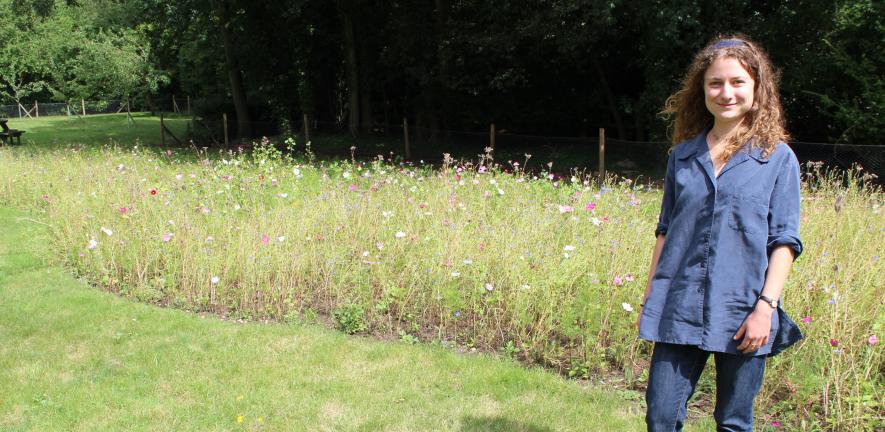
Submitted by Peter Lumb on Fri, 2019-09-27 12:56
Every Summer the University’s Environment & Energy Section hosts several student interns. Last month we reported on Robyn Topper’s efforts to map staff commutes to and from the University. This week we hear from Cecile Thiaucourt, who tells us of her project to engage staff and students with biodiversity on the University’s estate and beyond:
“This summer I have spent 8 weeks working in the Living Laboratory for Sustainability as the Biodiversity Engagement intern. The Living Lab is part of the University’s Environment and Energy section, which is within the Estate Management, and its focus is on making sure that the University’s operations are informed by its research. One of the recent ways the Living lab has done this is by bringing top academic experts on conservation to advise on how the University can support biodiversity and ecosystems on the land that it manages. The University is really keen to support biodiversity on its estate, and has taken action on this by carrying out a baseline survey to determine where the best opportunities are for preserving and enhancing nature. Following this there are now plans to develop targeted actions which will improve biodiversity. In support of this, my project looked at how we could create a strong community of staff and students who are excited about biodiversity and want to engage with it.
Getting the word out
After working on an outreach strategy, I contacted staff to find out who would be interested in taking part in Biodiversity-related activities. To make sure my message caught the attention of nature-loving staff who might have a packed email inbox, I used approaches from research in the behavioural sciences, for example I included pictures in my emails, because everyone likes cute fluffy animals! I was delighted to gather a community of about 80 members of staff, each with great ideas for supporting wildlife in their local surrounds. However it wasn’t just staff who came forward. I also had a good response from some local partners such as the Colleges, Cambridge City Council, Natural History Societies and the Botanic Garden, who were willing to provide some help and precious knowledge to the teams.
Teaming up
My next step was to group my keen groups of staff into what we’ve called ‘BiodiversiTeams’ across University sites, grouped on the basis of geographical proximity. Later this academic year, we will encourage the groups to take part in a competition rewarding the teams that have carried out the best biodiversity-related activities. We’re sure to see a broad range of activities, which could include running a ‘bioblitz’, going on Nature walks, building wildlife-friendly habitats, running identification workshops, starting community garden… the sky’s the limit!
What next for me
While I will shortly finish my internship, I’m looking forward to hearing how the project goes when it officially launches in the Spring. I’ve really enjoyed this internship, which has been an incredible opportunity for me to meet the many people interested in biodiversity in Cambridge and to feel part of this community. It has also been a very complementary experience to my degree in psychology and conservation that I acquired during my 3rd elective year as a vet student. I am now entering the 4th year of my vet studies with the aim to have a career in wildlife conservation. When I start working as a vet at the confluence of people, animals and the environment, the skills I have gained during the internship will be an invaluable addition to my more technical vet knowledge!”
Get involved
If you want to join a team and take part in the competition, you can find more information on the Environment & Energy website, or email us for more details.
